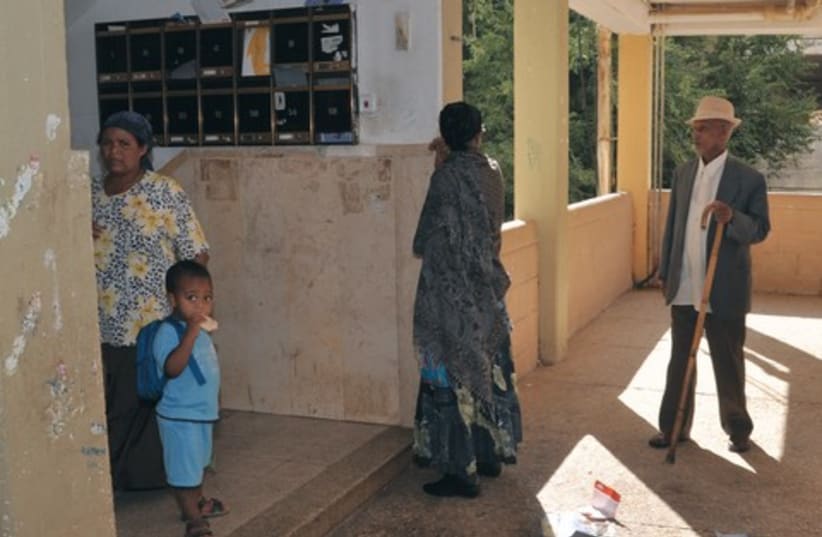This is the neighborhood of Kiryat Menahem in southwest Jerusalem, hastily established in the mid-1950s as temporary housing for the mass immigrations.
By the 1960s, the neighborhood was already considered lower-class. Today, it is a place to leave or to live in only if you have no other choice.
The more than 2,500 Jews of Ethiopian origin who live here, out of a total population of about 15,000, do not have any other choice. Most of the immigrants are concentrated in long, low tenements on three streets – Haavivit (Spring Whitlow flower) St., Hanurit (Turban Buttercup flower) St.
and Dominican Republic St., a remembrance of the special relations that existed decades ago between the State of Israel and Latin America.
This is the largest concentration of Ethiopian Jews in Jerusalem, and, with few exceptions, only Ethiopian Jews live here, creating a ghetto defined by skin color, ethnicity, and poverty. According to data provided by the Israel Association for Ethiopian Jews, some 39 percent of Ethiopian Jews live in the largest cities, concentrated in slum neighborhoods like this one.
The large families are cramped into the small apartments, their life activities spilling over into the neglected and dirty public areas. For many families, the National Insurance allowance they receive monthly is their only income. Many of the children are unable to attend after-school activities because of the cost. Over the long summer vacation, children of all ages hang out, and very few of them have bicycles or sports equipment or even a ball to bounce. A few volunteers offer the children simple games of beading and dodge ball. The community center has some funding for day camps, but not enough for all the children, says Tzion Getahon, director of the local neighborhood Community Center. “What hope can a child have for his future, if this is how he grows up?” he asks.
Some advocacy groups for Jews of Ethiopian origin claim that the government is deliberately creating ghettos like this as part of its discriminatory policy against Ethiopian immigrants; government officials deny the charges. Others, like Getahon, blame the high cost of housing and the mortgage policy. The mortgages offered to Ethiopian immigrants are more generous than those offered to other immigrant groups, but Ethiopians start off with less than other groups and, on the average, have less earning capacity. With almost no public, long-term rental available to them, and in the face of government policy that pushes them out of the absorption centers, they have no choice other than to purchase small, cramped apartments in crime-infested neighborhoods or in distant peripheral communities where there are no employment opportunities.
“These people lived normative lives in Ethiopia,” says Getahon. “It took the Europeans hundred of years to become normative Europeans, but Ethiopians are expected to be normative Israelis from the minute they arrive. It isn’t possible and this is the result. The State of Israel has to realize that if they are offered the services they need, Jews from Ethiopia can be productive citizens just like anyone else.” ✡
